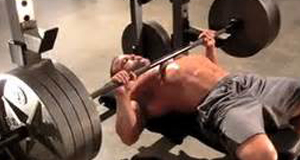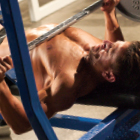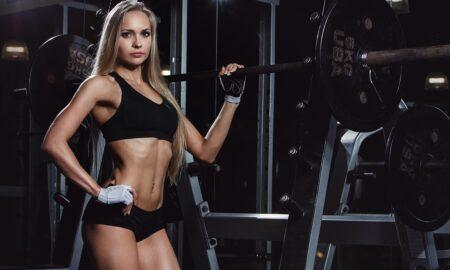

 Q: When I bench-press, I lower the bar to a point near my collarbones. I feel more stretch in my pecs that way, but I keep having problems with my shoulders, and my bench press never seems to progress. What am I doing wrong?
Q: When I bench-press, I lower the bar to a point near my collarbones. I feel more stretch in my pecs that way, but I keep having problems with my shoulders, and my bench press never seems to progress. What am I doing wrong?
A: Your bench-pressing technique is distorted. Done correctly, the bench press is an excellent exercise for most trainees, but if you corrupt it, you’re going to have problems. You must avoid injury if you’re to make good progress.
Below are the most common technique errors associated with the bench press. When you make form improvements, reduce your poundage to begin with, so that you’re using a weight that’s very comfortable for you. Then build it back gradually while maintaining the improved technique. Over the medium and long term you’ll be stronger and better developed as a result.
Error 1: Lowering the bar to the wrong position on the chest. Don’t try to stretch your pecs and shoulders while benching. Never lower the bar to a position anywhere near your collarbones. You should lower the bar to a point a little below your nipples.
Error 2: Using too wide a grip. Trainees often use a very wide grip on the bench. An extreme perversion of the of the movement is using a very wide grip and lowering the bar near your neck. Such a combination can be ruinous for the shoulders in particular. Use a medium-wide grip.
Error 3: Not having stable foot positioning. When your feet are on the bench, it prevents the stable position required to bench-press securely. If your feet are on the floor but your heels are off the ground (which usually goes together with excessive arching of the lower back), it compromises the stability of your foot position. Keep your feet flat on the floor, or if that’s not possible, elevate your feet on one or two large, smooth-side-up plates or a small platform.
Error 4: Using an incorrect grip. The thumbless grip, whereby your thumbs rest alongside your index fingers, is incorrect. It doesn’t give the security of grip that the proper one does.
Error 5: Arching the back excessively. While there must be some natural arching of the lower back, it should never be exaggerated. It’s typically exaggerated when lifters thrust their hips off the bench to raise their chest in order to reduce the distance the barbell has to move. As mentioned, this usually goes along with with lifting the heels off the floor.
Error 6: Not having sufficient control over the bar. The barbell is often lowered quickly and bounced somewhat from the chest. The bar should never be bounced. As well as increasing the risk of injury, bouncing increases the difficulty of the exercise. Changing direction so suddenly increases the perceived weight of the bar. Instead, lower the barbell to your chest with control, pause it for a second or two at your chest (while staying tight), and then push it up. Pause briefly at the top, and then repeat. You’ll have to reduce your poundage initially, but over a few weeks you’ll build it back and then some, and you’ll become a better bench presser as a result.
—Stuart McRobert
www.Hardgainer.com
Editor’s note: Stuart McRobert’s first byline in IRON MAN appeared in 1981. He’s the author of the new BRAWN series, Book 1: How to Build Up to 50 Pounds of Muscle the Natural Way, available from Home Gym Warehouse (800) 447-0008 or www.Home-Gym.com.




















You must be logged in to post a comment Login